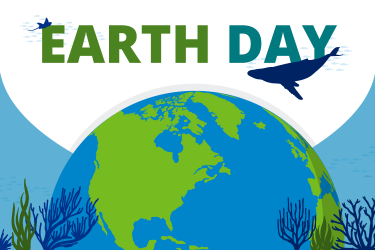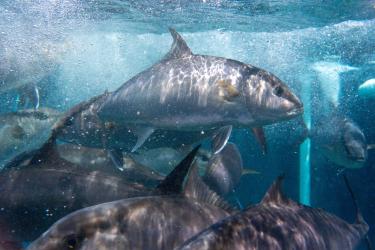Zuzy Abdala is a Program Analyst based in Silver Spring, Maryland contracting for Earth Resources Technology, Inc. She currently works in the NOAA Restoration Center in the Office of Habitat Conservation, where she served as a Knauss Fellow in 2020. She first joined NOAA Fisheries as an intern for the Office of Science and Technology in 2019.
What is your key responsibility?
I am continuing the work I started during my year as a 2020 Knauss Fellow. I’m gathering and analyzing information about the technical assistance provided by the NOAA Restoration Center, to illuminate its value and impact. Our technical assistance can be anything from project planning, to engagement and outreach, relationship-building, and sharing lessons learned and best practices. We use technical assistance and support to amplify the impact and effectiveness of the funding we provide to our partners.
Where did you grow up?
I am a second generation immigrant, born and raised in Northern Virginia, with extended family scattered across the Washington D.C. area, Mexico, and Lebanon. I grew up speaking both English and Spanish, because while my mom is American, my dad was born and raised in Oaxaca, Mexico. It’s one of my favorite places to visit.
Not only because I have extended family there, but the music, food, art, and other cultural elements are so incredibly unique to Oaxaca. My favorite things there include the Guelaguetza festival and seeing all the traditional folk dresses, carved wood alebrije art, any dish with mole negro, and Oaxacan marimba music.
What is your educational background?
I completed my undergraduate degree in 2014 at George Mason University in Fairfax, Virginia in general biology. My senior year, I was introduced to fish ecology by completing a research semester program. After that, I worked as an aquatic ecologist technician for the Illinois Natural History Survey near St. Louis. I sampled the Mississippi River for sturgeon, paddlefish, and silver carp, among others.
I then decided to continue my education in graduate school. I entered the oceanography program at Old Dominion University in Norfolk, Virginia, in 2015 as a Master’s student. While there, I was extremely fortunate to conduct research off the coast of the West Antarctic Peninsula for 5 weeks on the R/V Nathaniel B. Palmer in 2016.
In 2017, I was awarded the 3-year National Science Foundation’s Graduate Research Fellowship. During that fellowship, I completed an internship in the NOAA Fisheries Office of Science and Technology in Silver Spring, Maryland, in 2019. This internship transitioned seamlessly into my 2020 Knauss Fellowship, which I completed with the NOAA Restoration Center in Silver Spring, graduating with my Master’s along the way.
Is there a book, quote, or person that influenced you to be the person that you are today?
“No son los años en tu vida los que cuentan, es la vida en tus años.” Translation: “It’s not the years in your life that counts, it’s the life in your years.” This was a phrase that my abuelo (grandfather) used a lot, and it has always resonated with me. It reminds me that I shouldn’t hold myself back from taking big risks and going on adventures so I can live as long as possible. What’s the point of living a long life if you don’t do much with it? Use the one life you’re given to do as much as possible and make it uniquely yours.
What does National Hispanic Heritage Month mean to you?
National Hispanic Heritage Month is a reminder to be prideful and share about my Mexican heritage. It can be easy to lose touch with that side of my background because I have been told many times before that I “don’t look Mexican.” I think it’s important to recognize that Hispanic and Latinx people are incredibly diverse, which is exactly why it’s categorized as an ethnicity and not a race.




